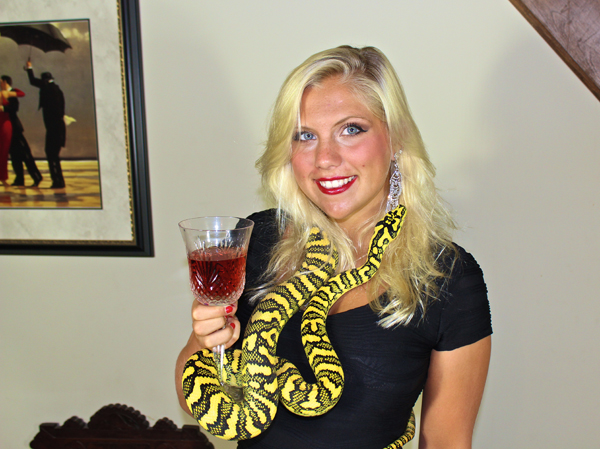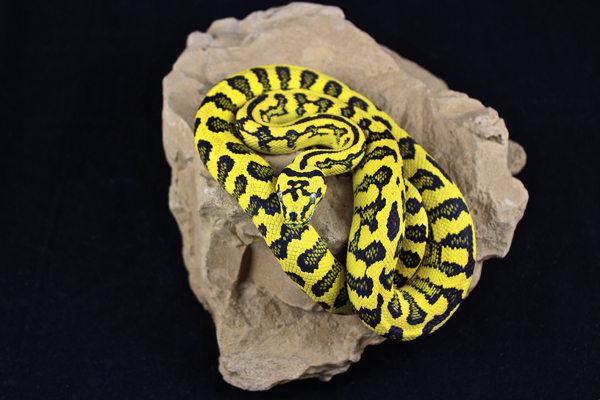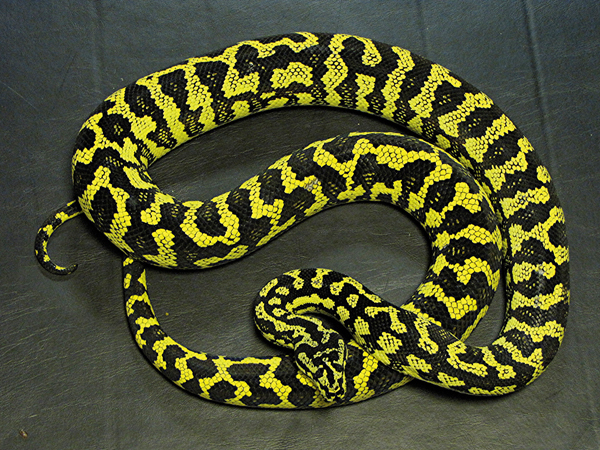Since the time hominids first became Homo sapiens and used plants and animals in ways other than hunting and gathering, the practice of selective bree
Since the time hominids first became Homo sapiens and used plants and animals in ways other than hunting and gathering, the practice of selective breeding began. Stated simply, selective breeding is the process of choosing certain plants or animals for particular traits and breeding them to increase the quantity and/or quality of those traits. Through selective breeding, humankind has created a phenomenal palette of domesticated animals and agricultural products to meet our needs. Darwin, in his famous book The Origin of Species (1859), discussed the selective breeding of pigeons, cattle and dogs, especially in regard to the success of this process in producing desirable animals.
Read More

John Battaglia
The author believes that, much like producing a fine wine, only time, patience and perseverance can yield extraordinary results. Seen here, the author's daughter displays a mature diamond jaguar carpet python that bears testimony to this method.
In regard to carpet pythons (Morelia spilotes), the practice of selective breeding has led to enormous success. Selective breeding of carpet pythons has resulted in a wide variety of colors and patterns, as well as new morphs that have never seen the light of day in their Australian natural habitat, but do in our household terrariums.
Successful selective breeding of carpet pythons requires detailed knowledge gathering, development of a breeding plan, patient acquisition of stock and an attention to detail. I will discuss each of these processes in detail below.
Gathering Knowledge
The initial process involves gaining as much knowledge as possible for the breeding goal. This includes reading thoroughly on the subject, talking with successful breeders and seeing as many carpet pythons as possible that are related to the breeding goal. For example, if the goal is to create clean, vibrant, black-and-yellow jungle carpet pythons, seeing as many jungle carpet pythons at all stages of development is key. This helps the prospective breeder develop a visual library of jungle carpet pythons and thus better ability to discriminate value when choosing the breeding stock.

John Battaglia
A diamond jungle jaguar python currently in the author’s collection (Morelia Trophy Club) at 2 years of age, showing the clean scales, that given the line genetics (Morelia Trophy Club Gamma line), will likely remain bright and clean for years to come.
Noting details of the ontogenetic color change is essential. While viewing numerous photos on the Internet is helpful, it is also critical to examine live animals. Seeing live animals affords perceptions of scales, colors and patterns that cannot be gained from viewing photos or videos. This gathering of knowledge pertaining to the breeding goal should occur before acquiring any stock. Planning specifically what you want to achieve also includes a timeline for achieving the selective breeding goal. In my opinion, lack of planning patience is where many people fall short in their selective-breeding efforts. The timeline should not be calculated by assuming totally successful breeding seasons and consistently healthy animals that will always breed when required. Nature has a way of waylaying the best laid plans, as animals sometimes develop illnesses at the most inopportune times, lay infertile eggs or act completely disinterested in breeding. Sometimes reaching the breeding goal in one or two years is reasonable, sometimes much longer is required. In my current selective breeding project, that is, creating shades of blue and green in jaguar carpet pythons using green tree python hybrids, I am estimating a decade will be required to achieve my goals.

JOHN BATTAGLIA
Two mature jungle carpet pythons engaged in copulation. Their clean, bright patterns are evident.
Because many carpet python enthusiasts acquire breeding stock as neonates or yearlings, there is a risk that their stock will not turn into the breeding quality that was hoped for once they reach breeding age. This is an especially important time to take a step back and realize more time is needed, rather than putting subpar pythons together just to get some kind of results. Often, breeding subpar pythons is not going to meet the original selective breeding goals; however, people find themselves breeding for breeding sake. The end result of this is often many subpar carpet python offspring that take a lot of time and effort to nurture and are a challenge to unload.
Buying the Right Stock
Buying neonates and yearlings for a carpet python selective-breeding project is usually a part of the process, as prime adult breeders are often not available. When mature, breeding-age carpet pythons are available, especially females, but they can be quite costly. Be especially cautious when a prime adult female carpet python is offered for sale, as some unscrupulous breeders will attempt to unload a seemingly healthy prize breeder that has had significant prior medical problems (this can include health problems associated with breeding, such as a history of egg dystocia). When buying young carpet pythons, research and patience are necessary.

john battaglia
Overall, tipping usually increases the attractiveness in carpet pythons, as can be seen in this jungle carpet python with extensive tipping.
Whenever possible, examining the sire (male) and dam (female) is extremely helpful. The reputation of the breeder becomes important here, as you have to take the breeder’s statement on faith that the progeny offered are from the sire and dam advertised. This is no small matter, as likely, the greatest percentage of success for achieving your breeding goals depends on obtaining the right stock. It pays to check the reputation of breeders, and confirm that they have consistently delivered on what they have advertised in the past. If the sire and dam both exhibit traits of your selective breeding goals, you are increasing the odds of your success.
If you cannot personally examine the sire and dam, recent photos of them involved in breeding activity can provide a good representation of them “at their worst.” Some breeders will post photos of the sire and dam when they were 2 years of age, and this is somewhat misleading, as most carpet pythons are clean and bright at an early age. There is a belief among some carpet python breeders that the dam carries a greater chance of passing the desired traits to offspring than the sire. While many animals carry genes that are sex-linked, I’m not aware of solid evidence that this occurs with genes influencing the appearance aspects of carpet python morphology.
In addition to the sire and dam influencing the progeny, the line-breeding history of the sire and dam will make a difference, as well. Line breeding can be defined as breeding snakes sharing similar genetics (for example, inbreeding sibling pythons or dam to offspring) to achieve the desired appearance morphology. A broader definition sometimes means that the snakes came from a specified breeder (for example, a VPI line python is one that originated from Vida Preciosa International). For purposes of this article, line breeding will refer to the former, and that is, the selective breeding using snakes sharing familial genes.
Carpet Python Breeding Basics
Most carpet pythons are annual breeders, and cycling them on a yearly basis will yield the best results. Gradually reducing the nighttime low temperatures (aim for 65 to 70 degrees Fahrenheit) and daily photoperiod (10 to 12 hours) will start the breeding process, usually in the fall. Daytime basking temperature should remain at least 90 degrees. Females should be given some extra meals prior to breeding season to build up some fat reserves that will be needed for egg formation and oviposition. This is especially critical when allowing the female to incubate her own eggs (maternal incubation), a unique behavior in carpet pythons that can be exciting to witness. While females are best kept slightly plump at the beginning of breeding season, males should be kept lean and muscular for optimal breeding vigor. Males will often stop eating during breeding season and display cruising behavior in their cage, relentlessly crawling in pursuit of a mate.
Carpet pythons should not be housed together. During the breeding season, males will display combat behavior with other males, and this can result in serious injuries. For breeding, introducing the male into a female’s cage is a good way to start. Watch closely after the initial introduction, as females can sometimes develop territorial defensiveness in their cage and display aggressive behavior toward the male. Once a peaceful coexistence is confirmed, leave them together for several days at a time. Keep a record of copulations. Usually, copulation will occur at night, sometimes lasting for 12 hours or more. Once the snakes seem to be avoiding each other and no further copulations are observed, separate them for a few days and then repeat the introduction as before. This process can be repeated for an initial month or two of the breeding season. If no breeding behavior is observed, several techniques can be used to facilitate the process. This can include introducing the female into the male’s cage, using a neutral cage for both, placing shed skins from other male pythons in the cage (always keep some in the freezer for breeding season), and taking advantage of low-pressure fronts (storms increase breeding behavior).
When fertilization of ova occur (the female becomes gravid), she will display a mid-body swelling, termed “ovulation. “ Ovulation may last for eight to 24 hours, and it is the beginning of egg formation. Once ovulation occurs, the female should be kept alone and provided with a constant basking temperature of at least 95 degrees. She will move on and off the basking site, and she usually stops feeding during this time. She should be provided with a nest box with ample bedding and humidity. Approximately three weeks after ovulation, she will undergo a pre-lay shed. Egg laying (oviposition) will occur about 25 days after the pre-lay shed, usually around 10 to 25 eggs.
There are many different techniques and equipment used for artificial incubation of carpet python eggs, with no one correct method. Overall, the eggs should be kept in the highest humidity conditions as possible (95 to 100 percent) but without direct water contact. The incubation temperature should average 88 to 90 degrees, and the eggs will hatch in approximately 50 to 55 days when kept in these conditions.

john battaglia
An example of a jungle carpet python with attractive black tipping outlining some of the yellow scales.
Line breeding in pythons does not generally incur the problems seen with mammals, where unwanted genetic traits emerge as a result of inbreeding. When the sire and dam both come from a breeding line that has produced offspring with similar desired traits, this also increases the chances of your selective breeding goals. You can see this from examining the grand sire and grand dam of each, as well as the siblings of the sire and dam. Your success will be further enhanced if the sire and dam have produced prior offspring with the desired traits.
In summary, each occurrence of a carpet python that is genetically linked to the sire and dam, and exhibits the selective breeding goals of the progeny you have selected, additively increases the chances of success for your project.
Colors
Many carpet python neonates look indistinguishable from one another at hatching and sometimes for several months thereafter. This makes the genetic history of the neonates as described previously so important. In describing the color of carpet pythons, it is useful to separate the base color from the saddles or pattern color. Sometimes a neonate with particularly bright colors will be held back by the breeder in anticipation this brightness will endure. In my experience, the brightness seen at hatch in some neonates may or may not translate into their mature colors. Regardless, these pythons are often held back by breeders in hope that this initial brightness will carry over to maturity.
The simple fact is that carpet python neonates look more similar than dissimilar. Newly hatched carpet pythons often have shades of gray or dark color on the scales in the lighter parts of their pattern. These darker shaded areas will disappear within a few sheds.
It is important to realize that up until about 1 year of age, most carpet pythons look clean and vibrant. There is no guarantee that a sensational-appearing carpet python at 1 year of age will maintain the cleanliness or brightness into its mature form. At about 2 years of age, you can make a pretty good determination of the direction the snake is headed by looking for smudging on the lighter portions of the scales. Smudging of the lighter-colored scales can be differentiated from what has been called “tipping.” Tipping usually refers to the development of black scales within the lighter colored scales in the saddles, or the opposite (lighter colored scales bordering black, sometimes with a fishnet appearance). Tipping can also present as a black outline along the lighter-colored scales.
Overall, tipping usually increases the attractiveness in carpet pythons. Smudging occurs when the lighter, non-black scales develop a darker, usually brown color and are usually associated with a less attractive appearance. Evidence for smudging can be very faint in a young carpet python; however, it will only get darker with age. Smudging areas will not disappear after a shed, as is sometimes proclaimed. Careful analysis of the scales on a 2-year-old carpet python will usually reveal the potential for smudging.
In summary, selective breeding of carpet pythons includes a careful and detailed approach, both in determining your breeding goals, as well as with finding the right pythons to use for your project. Much like producing a fine wine, only time, patience and perseverance can yield extraordinary results.
John Battaglia, MD, has been a reptile enthusiast for more than 40 years, and throughout the past decade has focused his efforts on the selective breeding of carpet pythons and, more recently, on carpet python and green tree python hybridization. Visit his website at moreliatrophyclub.com.



